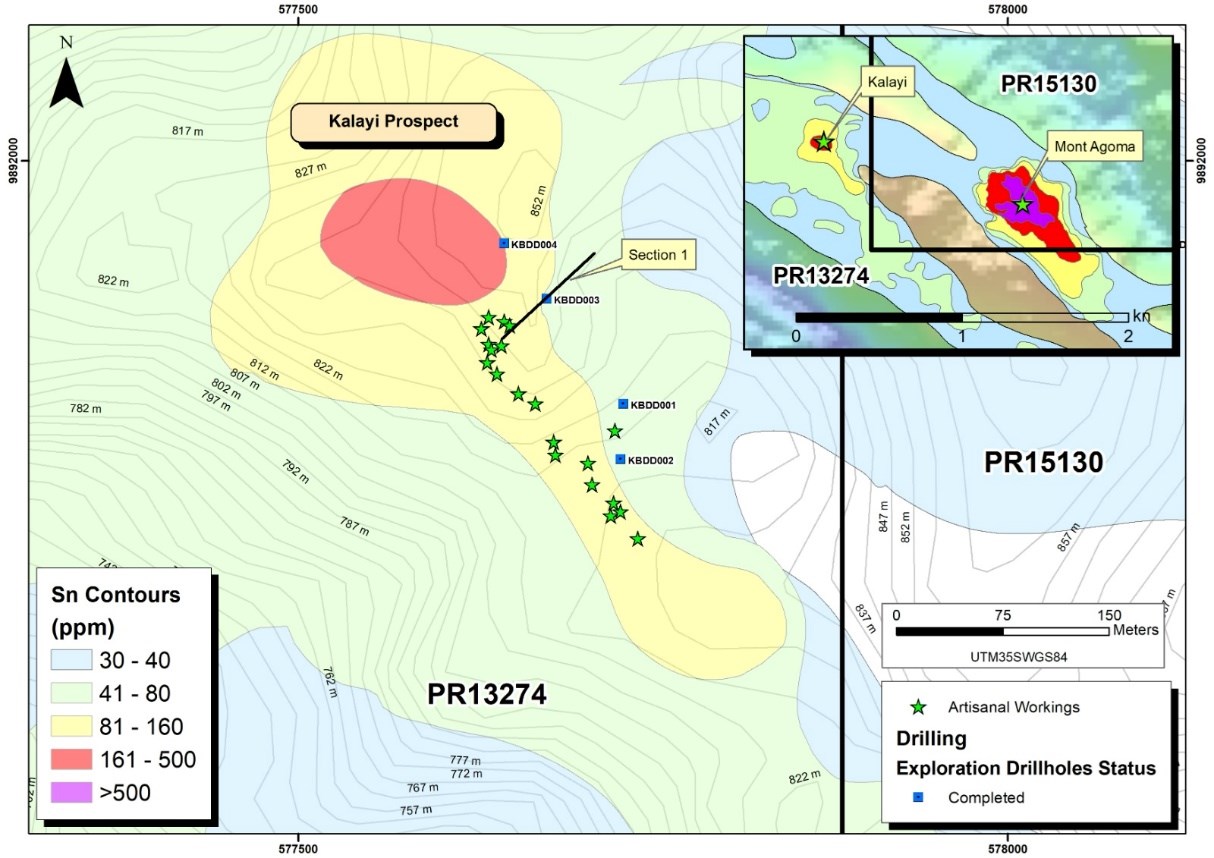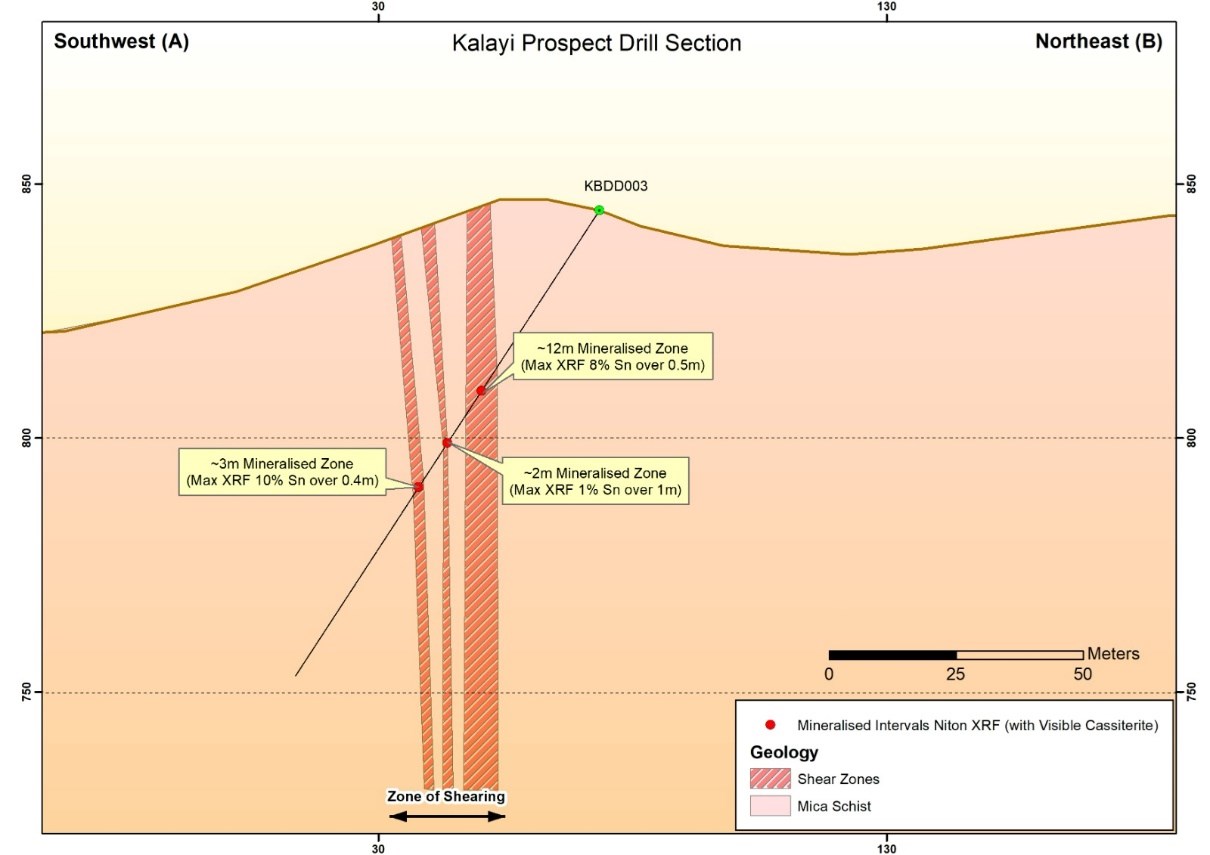Rome Resources (TSXV:RMR), has reported the discovery of tin mineralization at its Kalayi Prospect, part of the Bisie North Tin Project (BNTP), located in the Walikale District of North Kivu Province, Democratic Republic of the Congo. This finding is based on results from handheld XRF analyses performed on samples gathered during a recent diamond drilling campaign.
CEO and President Mark Gasson, commented in a press release: “We are extremely excited about the new discovery at Kalayi. To date the Company has tested 150m of the defined 2km tin in soil anomaly where we are confident of identifying additional drill targets with infill sampling, trenching and systematic exploration. We consider the initial drilling at Kalayi to be hugely successful as it is unusual to have two intersections of this magnitude from a first round of drilling, given the team’s understanding of mineralisation along the Bisie Ridge. This team was responsible for the exploration and resource drilling on Alphamin’s world-class tin projects.”
The BNTP is comprised of two adjoining properties: exploration permits PR 13274 and PR 15130. The Kalayi Prospect was assessed by drilling four diamond holes to a cumulative depth of 463.5 meters, probing beneath the site’s artisanal workings, which were previously found to contain as much as 11% tin in some 1-meter samples.
This drilling activity revealed significant mineralization within a 150-meter range of a larger 2,000-meter tin-in-soil anomaly. The most notable tin deposits were identified within pulps from samples taken from the two discovery holes, KBDD002 and KBDD003. Visible cassiterite (tin ore) was observed throughout most of the mineralized zones. The highest-grade tin concentrations were found in three distinct shear zones, including an 8% concentration in a 12.5-meter zone, 1% in a 2-meter zone, and 10% in a 3-meter zone. Meanwhile, hole KBDD002 registered a maximum of 6% tin concentration in a 2.5-meter zone.
The tin mineralization at Kalayi is unique, being found within specific quartz veined shear zones inside mica schists, with no associations to copper, zinc, or lead as seen in the company’s Mont Agoma Prospect. This pattern of mineralization aligns with those found along the Bisie ridge, characterized by distinct shoot geometry, with fluctuating grades and widths in neighboring drill holes.
Moving forward, Rome Resources plans to initiate infill soil sampling and trenching programs where overburden is not excessive, aiming to identify surface mineralized quartz veins. These findings will guide further drilling operations at depth and along the strike of the 2km tin-in-soil anomaly. In addition, any new underground artisanal workings will be mapped to enhance understanding of the controlling structures’ orientation and width variations.

Highlights from the results are as follows:
- Significant tin mineralisation identified visually and from the handheld XRF analyser on pulps from 2 of 4 diamond holes
- A 12.5m zone with a maximum grade, pursuant to handheld XRF analyses, of 0.5m at 8% Sn within a broader shear zone which included a further 3m zone with a maximum of 10% Sn was identified in KBDD003; a 2.5m zone with a maximum grade of 6% Sn in KBDD002
- Assay results from July drilling program expected in August 2023
- Drilling covered 150m of strike of an associated 2,000m tin in soil anomaly at the Kalayi Prospect
- The Company is currently conducting infill soil sampling and trenching programmes to assist with planning of the next phase of drilling




 Follow us on Twitter
Follow us on Twitter Become our facebook fan
Become our facebook fan










Comments are closed.